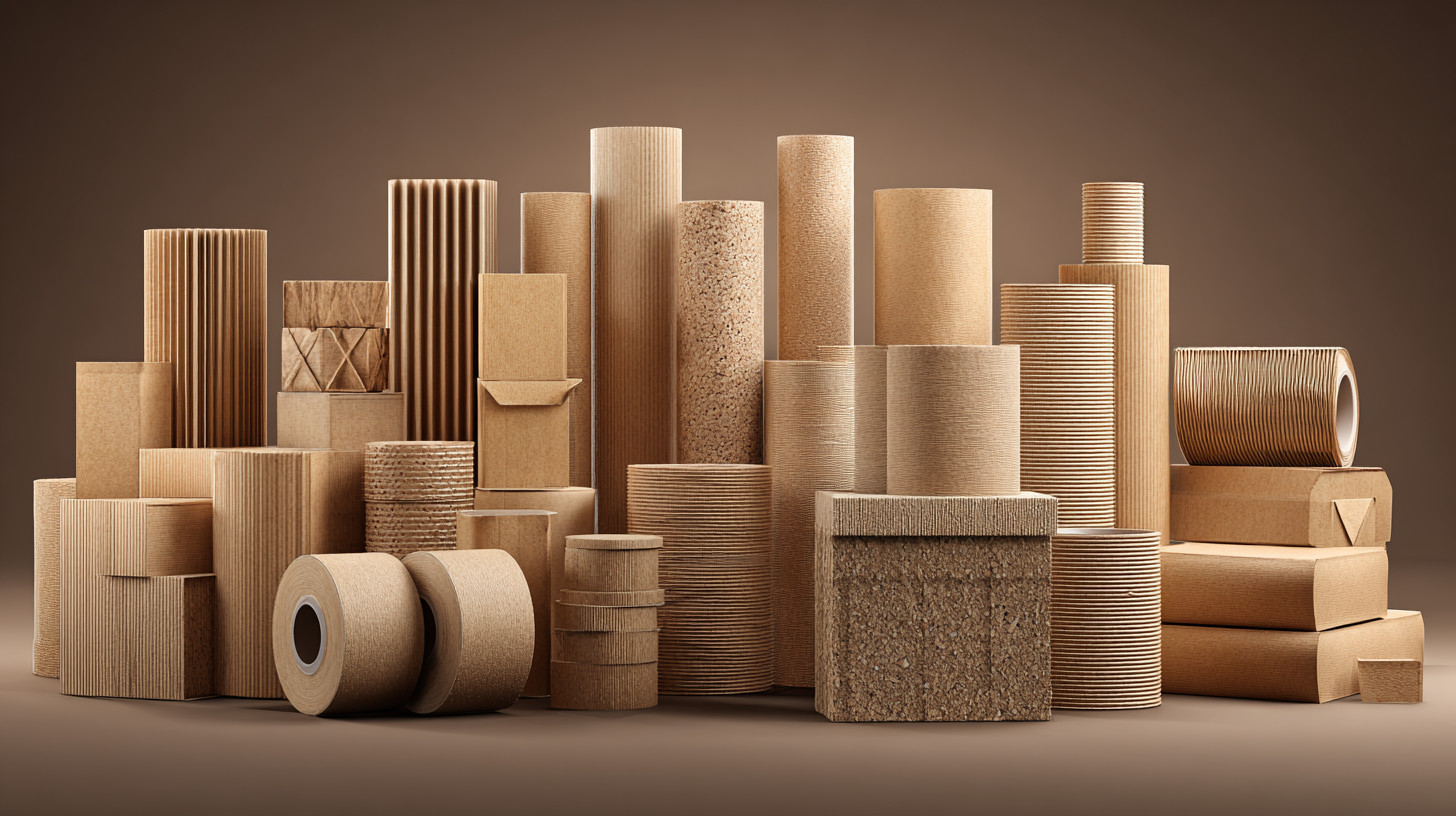The rising emphasis on sustainability in the global market has prompted a transformative shift towards innovative packaging materials, which play a crucial role in addressing environmental challenges. According to a report by Smithers Pira, the global sustainable packaging market is expected to reach $500 billion by 2027, with packaging materials comprising a significant segment due to their potential for reducing waste and improving recyclability. This shift not only aligns with consumer preferences, as 73% of millennials are willing to pay more for sustainable packaging, but also fulfills corporate social responsibility goals. Companies are increasingly turning to bio-based, compostable, and recyclable materials, driven by regulatory pressures and market demand. Consequently, embracing innovative packaging materials is not just an operational adjustment; it is a vital strategy for businesses aiming to lead in sustainability while successfully engaging environmentally conscious consumers.

Innovative packaging materials are at the forefront of sustainability trends in the global market, reflecting a growing commitment to environmentally friendly solutions. Notably, Brussels has recently launched Europe’s largest factory dedicated to producing biodegradable packaging from mycelium, marking a significant step in replacing traditional polystyrene foam. This pioneering approach not only minimizes plastic waste but also emphasizes the potential of biodegradable materials in reducing environmental footprints within various industries.
In addition to mycelium-based solutions, the sustainable packaging sector experiences rapid growth driven by increasing consumer demands for ecological alternatives. The global market for sustainable packaging materials is projected to expand significantly, with forecasts suggesting that by 2025 it will surpass $545 billion. This surge is fueled by technological innovations and a shift towards bioplastics, estimated to grow from $3.76 billion in 2023 to $6.33 billion by 2032. As industries explore diverse applications—from flexible plastics to recycled paper products—the emphasis on sustainability continues to shape market dynamics and consumer preferences.
Digital technologies are playing a transformative role in enhancing packaging efficiency, significantly contributing to sustainability trends in the global market. Innovations such as artificial intelligence, machine learning, and IoT (Internet of Things) facilitate real-time data analysis, enabling companies to optimize their packaging processes. For instance, AI algorithms can predict demand fluctuations, allowing manufacturers to adjust production schedules and minimize waste. Moreover, smart packaging solutions equipped with sensors can monitor product conditions throughout the supply chain, ensuring that materials are used efficiently and only replaced when necessary.

Additionally, digital technologies streamline the design and development of packaging materials. Advanced software for 3D modeling enables designers to experiment with sustainable materials, ensuring the final product is both eco-friendly and cost-effective. Virtual reality (VR) and augmented reality (AR) are emerging tools that cater to interactive packaging design, allowing consumers to engage with the packaging before making a purchase. This not only enhances customer experience but also promotes a stronger awareness of sustainable practices, further driving the shift toward eco-friendly packaging solutions. As these digital advancements continue to evolve, they will undoubtedly sustain the momentum towards environmentally responsible packaging in the global market.
The growing awareness of environmental issues has propelled innovative packaging materials to the forefront of the global market. Eco-friendly packaging is shaping consumer perceptions, with an increasing demand for materials that minimize environmental impact. By replacing conventional plastics with biodegradable alternatives, companies are not only catering to the eco-conscious consumer but also adhering to emerging regulations aimed at reducing waste. This shift is critical as businesses strive to enhance their brand image while contributing positively to sustainability efforts.
Market trends indicate a robust growth trajectory for eco-friendly packaging solutions. As we move towards 2025, significant sectors such as protective packaging, paper-based materials, and reusable containers are expected to flourish. The projected compound annual growth rate for these segments underscores the market's potential, revealing a broader shift towards sustainable practices across various industries. This trend not only enhances product appeal but also fosters a culture of sustainability, encouraging businesses to innovate and invest in greener packaging technologies.
In recent years, the global market has witnessed a significant shift towards sustainability, particularly in the packaging sector. Leading companies are increasingly adopting innovative packaging materials that not only fulfill functional needs but also align with environmental goals. A case study by Smithers highlights that global demand for sustainable packaging is projected to reach approximately $500 billion by 2026, driven by consumer preferences for eco-friendly options.
One notable example is Unilever's partnership with sustainable material providers to create packaging derived from agricultural waste. This initiative has successfully reduced their plastic footprint and led to a 50% decrease in the use of virgin plastic in some product lines. According to a report from the Ellen MacArthur Foundation, companies adopting circular economy practices in packaging can expect operational cost savings of up to 70% over the product lifecycle. These successful implementations not only demonstrate the feasibility of sustainable packaging solutions but also underscore the economic benefits that accompany environmentally responsible choices in the industry.
In recent years, consumer preferences have significantly shifted towards environmentally friendly packaging options, driven by a growing awareness of sustainability issues. Research from Smithers Pira indicates that the global market for sustainable packaging is projected to reach $500 billion by 2027, reflecting a compound annual growth rate (CAGR) of 5.1%. This surge is primarily influenced by consumers demanding eco-conscious packaging solutions, with 72% of respondents in a recent survey by Nielsen reporting that they are willing to pay more for products packaged in sustainable materials.

The demand for green packaging is not merely a trend but a fundamental shift in purchasing behavior. According to a report by Grand View Research, biodegradable and compostable packaging materials are expected to witness a CAGR of 16.5% from 2022 to 2030, underscoring the urgency for brands to adapt to these changing preferences. Moreover, the impact of plastic waste on the environment has prompted consumers to favor brands that are committed to reducing their carbon footprint, with 63% of buyers stating that sustainable packaging influences their brand loyalty. This growing consumer consciousness presents both a challenge and an opportunity for manufacturers to innovate and adopt sustainable packaging solutions that align with these emerging market trends.
Get Free Estimate!

